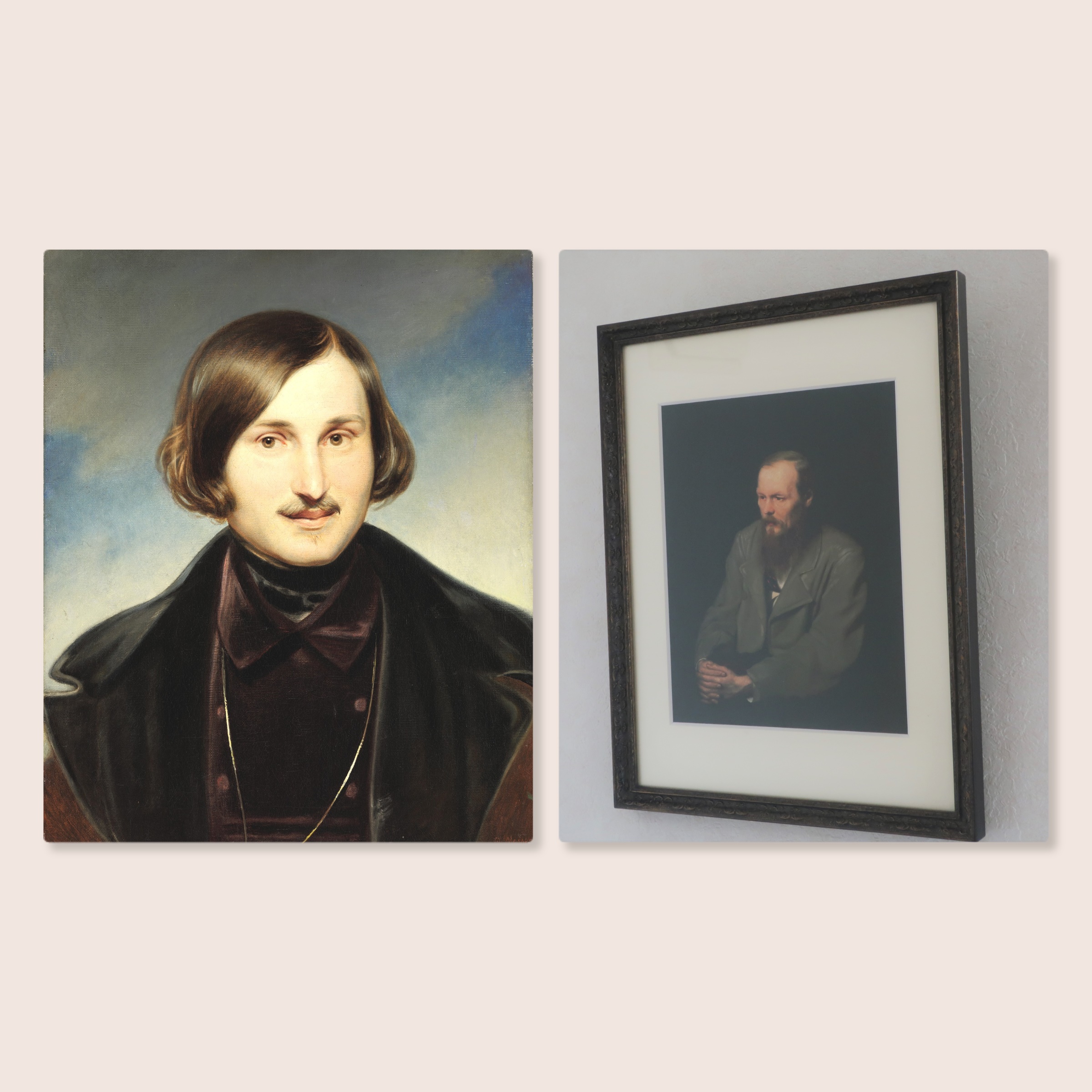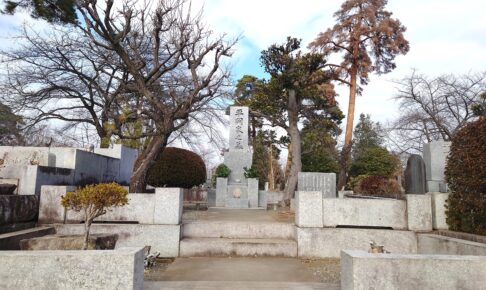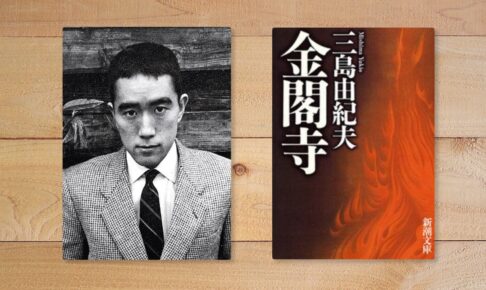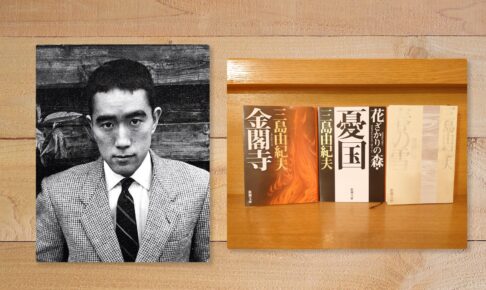Table of Contents
Gogol, star of Russian literature after Pushkin
In previous articles, we have talked about Pushkin, who was Dostoevsky's greatest admirer, and now we will talk about Gogol, who led the Russian literary world after Pushkin.
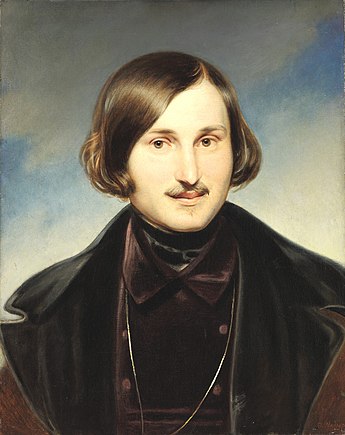
Gogol was also a very favorite writer of Dostoevsky, and his debut novelThe Poor.is said to be strongly influenced by Gogol.
In his later years, he read Gogol's "Taras Bouliba" to his children, an episode that shows his affection for the writer throughout his life.
Let's take a quick look at the history of Gogol's arrival.
Nikolai Vasilyevich Gogol-Yanovskii (18009-52) was born to a Cossack landowning noble family in Sorochintsy, Mirgorod District, Poltava Province, Ukraine, and entered a newly established high school (Rizei) in Nezhin in 1821. Like Pushkin's school in Rizei, there were many students who wrote poetry and created a coterie of handwritten journals, and Gogol is said to have written many works. Gogol did not show great literary talent from the beginning, but he was a talented actor, imitating people's gestures, giving avenging names, and writing satirical poems. His father was an amateur dramatist who wrote poems and comedies in Ukrainian. Gogol seems to have been descended from him. A shy, short boy, he found early salvation in the world of literature and imagination.
Kawabata Kaori, History of Russian Literature, Iwanami Shoten, p. 152
Gogol is 12 years older than Dostoevsky and was born in Ukraine.
His work is characterized by humorous satire, and his humor seems to have already been on display since he was a boy.
As a writer, he left behind many works as shown in the list of writings below, but in his later years he suffered a mental crisis and ended his life in 1852.
Gogol's major works
1831-1832 "Night Tales from the Suburbs of Dicarnica"
1835 "Mirgorod" (a medium-length collection of writings, including "The Old-Tempered Landlords," "Taras Bouliba," and "Vii")
1835 'TheNevsky Boulevard", "diary of a madmanPortraits."
1836 "nose", "public prosecutor'-' (used in place of '-')
1842 "Rome," inThe Soul of Death Part I", "overcoat'-' (used in place of '-')
1852 "The Soul of Death, Part II" (unfinished)
Gogol and Petersburg
Gogol began writing fantastic novels set in Petersburg in 1835.
Originally, Pushkin'sThe Bronze Knight.andThe Queen of Spades.Gogol took the image of the fantasy city of Petersburg, created by the "Gogolites," even further and made it his own medicine cage.
Russian literature scholar Kaori Kawabata states
Gogol turned his attention from Ukraine to Petersburg, and after his collection "Arabeski" (1835), he wrote a series of short stories, known as "Petersburg stories," about the lives of poor artists and low-ranking officials in the capital.
Although the demons that bustled about in his early works have seemingly disappeared from this northern city, the demonic forces are still strong in "Nevsky Boulevard" and "Portraits," both of which are included in this collection.
Raised under the influence of a religious mother, Gogol was dominated by the sense, deeply rooted in the populace since the Middle Ages, that demonic forces were a constant threat to mankind. Fear of hell and death were Gogol's most powerful passions.
The third work included in "Arabeski" is "Diary of a Madman," which deals with the unhappy love affair of a petty official with the daughter of his superior. All of these themes were later developed by Dostoevsky as the so-called "myth of Petersburg.
Kawabata Kaori, History of Russian Literature, Iwanami Shoten, p. 155-156
Some line breaks have been made.
It was Gogol who established the Petersburg style, which had a direct influence on Dostoevsky, and Dostoevsky's debut novelThe Poor.was born out of this very trend.
Gogol as a Pioneer of Russian Realist Literature
The word realism often comes up when reading commentaries on Russian literary works.
This word "realism" that you seem to understand but don't quite understand.
Gogol was also the inspiration for the creation of this genre of fiction called realism.
Gogol created the soil in which Russian realism was born.
Mr. Kawabata's explanation was very easy to understand, so I will quote it here, although it is a little lengthy.
Between 1842 and 1845, a literary school known as the "Natural School" was formed, mainly under the influence of Gogol, with the addition of French writers such as Jules Janin and other enthusiasts, as well as the works of early Dickens. This school favored the genre of "physiology" or "physiological sketches.
Many of the characteristics of this school derive from Gogol. Themes, plots, the "downgrading" of the protagonist, the demeaning (e.g., the protagonist is compared to animals or plants), the deliberate exaggeration of the dirty aspects of the lower strata of reality, the "physiological" processing of everyday life (meaningless actions such as eating, drinking, smoking, defecating, blowing one's nose), the dirty prose landscape (fog, dust, mud, rainy Petersburg, gray houses, etc.), and an interest in the things that surround humans (clothing, furniture, etc.) rather than the humans themselves.
In Gogol's case, his obsession with depicting the dirty, negative, dark side was intended to reveal the absurdity and emptiness of the real world and to evoke a longing for a better, ideal world. The first part of "The Soul of the Dead" had this very intention, and as mentioned above, the goal of "The Prosecutor" was similar. Gogol and most of the writers of the 1940s belonged to Romanticism in terms of their worldview, in that they believed in the existence of "other worlds" and sought to represent them through metaphor.
However, apart from his intentions and motives, Gogol paved the way to realism by his interest in manners and details, and by taking as his subject matter the vulgar and mundane things that were traditionally considered unacceptable to write about, thereby removing literary taboos once and for all. Once naturalistic hyperbole and the grotesque, which considered reality meaningless and absurd, were overcome, the path to realism was opened.
Kawabata Kaori, History of Russian Literature, Iwanami Shoten, p. 180-181
According to this commentary, Gogol himself is not so much a realist artist as someone who created the path to that point.
Gogol himself was not a realist in the pure sense of the word, as he still had naturalistic exaggerations and grotesque expressions that considered reality meaningless and absurd, but the method he pioneered of "observing the human world itself more deeply and more realistically" gave birth to a literary style called Russian realism Gogol's method of "deeper and more realistic observation of the human world itself" led later writers to create a literary style known as Russian realism.
We will begin looking at Gogol's work in the next article. We hope you will continue to stay with us if you are interested, as we have found his relationship with Dostoevsky very interesting.
Next Article.
Related Articles












